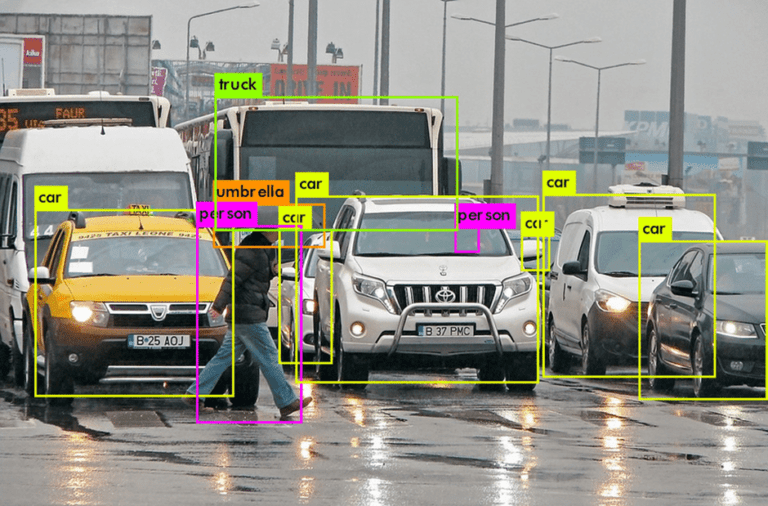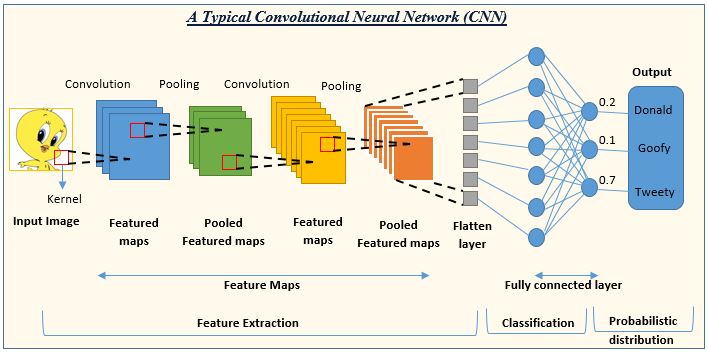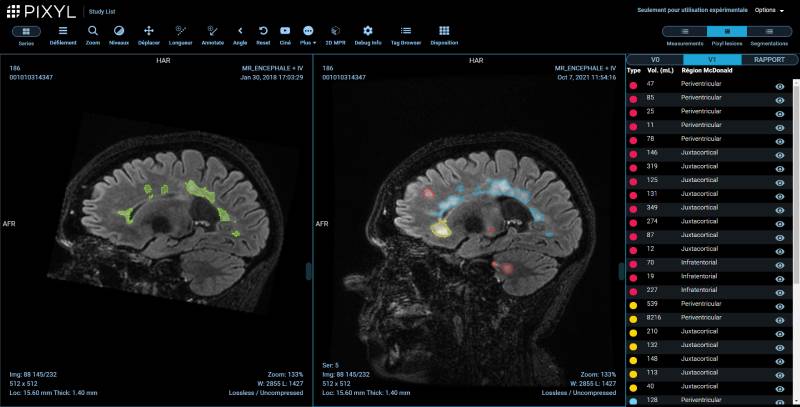What is the Difference Between Semantic vs Instance Segmentation?

Have you ever wondered how self-driving cars "see" the world around them? Or how doctors can analyse complex medical scans with such precision?
The answer lies in two techniques found in computer vision called semantic segmentation and instance segmentation.
These techniques allow computers to understand the content of an image by not just identifying objects, but also pinpointing their exact location and even telling them apart from similar objects.
In this blog post, you will learn about the difference between semantic and instance segmentation. We'll also be sharing the real world applications of both of these methods.
What is Image Segmentation in AI?
Image segmentation is a process that allows machines to view and interpret images much like the human eye, but with an added layer of analytical depth.
Image segmentation takes an image and divides it into meaningful sections.
This makes the image easier for AI systems to analyse by categorizing every pixel into a specific label or category.
In computer vision, there are three main ways to divide an image for segmentation
- Pixel-based segmentation: Identifies and groups pixels with similar characteristics such as colour, intensity, or texture.
![]()
- Edge-based segmentation: Detects the edges within an image to delineate objects from their surroundings or separate different features within the objects themselves.

- Region-based segmentation: Groups adjacent pixels that share the same visual characteristics.
Imagine looking at a complex mosaic up close. Each tile of the mosaic can be seen as a separate segment, which, when viewed together, creates a comprehensive picture.
With image segmentation the mosaic can be broken down into parts that are easier for the machine to understand and process, such as separating trees from buildings in a landscape photo.
What is Semantic Segmentation?
Semantic segmentation classifies each pixel in an image into predefined categories or classes.
Through semantic segmentation, AI systems can distinguish between different types of objects, surfaces, and backgrounds, providing a comprehensive understanding of what the image contains.
By itself, simple image segmentation simply divides the image into distinct segments based on color, texture, or other visual cues. It doesn't necessarily assign any meaning or classification to those segments.
Whereas semantic segmentation builds upon image segmentation by adding a layer of semantic understanding.
It takes those segments and assigns a specific class label to each one. In an image, it classifies each pixel according to what it represents (e.g., "dog," "grass," "sky").

Source: Nomidl
How Semantic Segmentation Works
Here’s a breakdown of how semantic segmentation works:
Image Input
The process begins when an image is fed into a semantic segmentation model. This image can range from a simple photograph to complex medical or satellite imagery, depending on the application.
Feature Extraction
Using deep learning algorithms, primarily Convolutional Neural Networks (CNNs), the model analyses the image to identify patterns, textures, colours, and other relevant features.

This stage is crucial for understanding the basic components that make up the image.
Pixel Classification
After identifying the features, the model assigns each pixel in the image to a specific class based on its characteristics.
This classification is done based on the training received by the model, where it has learned to distinguish between different classes such as roads, buildings, cars, trees, and so forth.
Segmentation Map Creation
Once all pixels are classified, the model generates a segmentation map. This map visually represents the distribution of the classified pixels, with each class typically assigned a unique color.
The result is a color-coded image where each colour represents a different class, providing a clear and comprehensive view of how the various elements within the image are categorized.
Post-Processing
In some cases, additional processing might be applied to refine the segmentation map. This could include smoothing edges, removing noise, or applying morphological operations to improve the accuracy and aesthetics of the final output.
Analysis and Application
The segmented image is now ready for analysis or integration into further applications.
Whether it's for autonomous vehicle navigation, medical imaging diagnostics, or urban planning using satellite imagery, the detailed insights provided by semantic segmentation facilitate informed decision-making and actions.
What is Instance Segmentation?
Instance segmentation not only categorizes each pixel of an image into various classes but also differentiates between individual objects of the same class.
For instance, imagine taking a photograph of a park where several dogs are playing.

Source: Encord
While semantic segmentation would allow AI to identify pixels that belong to dogs, instance segmentation goes further by differentiating each dog as a unique entity, or instance. (e.g. dog1, dog2, dog3, etc.)
This means that AI can distinguish between different entities of the same type, making the interpretation of images more detailed and nuanced.
How Instance Segmentation Works
Here are the steps involved in how instance segmentation operates and segments images:
Building on Semantic Segmentation
Much like its semantic cousin, instance segmentation also relies on deep learning models, often leveraging Convolutional Neural Networks (CNNs) as the core engine. These models are first trained on labelled data similar to semantic segmentation, where each pixel is assigned a class label.
Learning to Differentiate Instances
The key difference lies in the training data.
Here, the data is meticulously labelled to not only identify the object class (e.g., "car"), but also to assign a unique identifier to each individual instance of that object (e.g., "car_1," "car_2").
This allows the model to learn the subtle differences between separate objects within the same class.
Pixel-Level Prediction with a Twist
During the processing stage, the model takes an image as input and analyses it through its layers.
Similar to semantic segmentation, it predicts a class label for each pixel.
However, in instance segmentation, the model goes a step further. It also predicts an instance identifier for each pixel, essentially creating a two-channel output.
Untangling the Labels
The model's output consists of two channels – one for class labels (e.g., "car") and another for instance identifiers (e.g., "car_1," "car_2").
By combining these channels, the final result is a segmented image where each object is not only categorized but also assigned a unique identifier, allowing for precise differentiation between individual instances.
Difference between Semantic vs Instance Segmentation
While both techniques segment images, their focus and level of detail vary significantly.
Focus
Semantic segmentation concentrates on the type of object in an image.
It assigns a category label (like "car," "person," or "sky") to each pixel. Think of it like labelling different sections of a painting – the sky is blue, the trees are green, and the people are brown.
Instance segmentation goes beyond just labelling object types. It identifies and segments every single instance of an object, even if they belong to the same class.
Imagine outlining each individual person in a crowd scene, differentiating them from one another.
Level of Detail
Semantic segmentation provides a broader understanding of the scene. It tells you what objects are present, but doesn't distinguish between individual instances.
Instance segmentation offers a more granular view. It not only identifies object types but also precisely locates and differentiates each individual object within the image.
The choice between semantic and instance segmentation hinges on the specific requirements of the application. Semantic segmentation excels in tasks requiring broad categorization, while instance segmentation is unparalleled for detailed, individual object analysis.
Real World Applications of Semantic and Instance Segmentation
Now that you've got a better idea of the differences between semantic vs instance segmentation, let's look at some of the real-world applications of these techniques.
Medicine/Healthcare
Semantic segmentation enables the precise outlining of tumour boundaries within medical imagery, such as MRI and CT scans.
By accurately classifying each pixel, doctors can determine the size, shape, and location of tumours, crucial for diagnosis and monitoring the disease's progression.

In the world of pathology, instance segmentation can enhance analysis by counting and categorizing individual cells or structures within the sample, offering insights into the severity and spread of diseases at a cellular level.
Self-Driving Cars
Semantic segmentation facilitates the accurate identification of roads, lanes, and sidewalks, ensuring that self-driving cars stay within their lanes and follow the correct paths.
Instance segmentation identifies and tracks the movement of nearby vehicles and cyclists, allowing for anticipatory adjustments in speed and positioning to maintain safe distances and avoid potential hazards.
Agriculture
In agriculture, semantic segmentation assists agricultural robots in identifying crops versus weeds, enabling targeted actions such as precise pesticide application or irrigation.

This not only improves crop yield but also reduces environmental impact.
Instance segmentation takes this a step further by recognizing individual plants, even of the same species. This allows for plant-level health assessments and interventions, promoting optimal growth conditions.
Conclusion
The applications of semantic and instance segmentation across diverse fields underscore their transformative potential. These technologies not only enhance operational efficiency and safety but also pave the way for ground-breaking advancements.
By integrating these sophisticated computer vision techniques, industries are unlocking new levels of precision, reliability, and insight, leading to smarter decisions and innovative solutions that promise to reshape our world.











